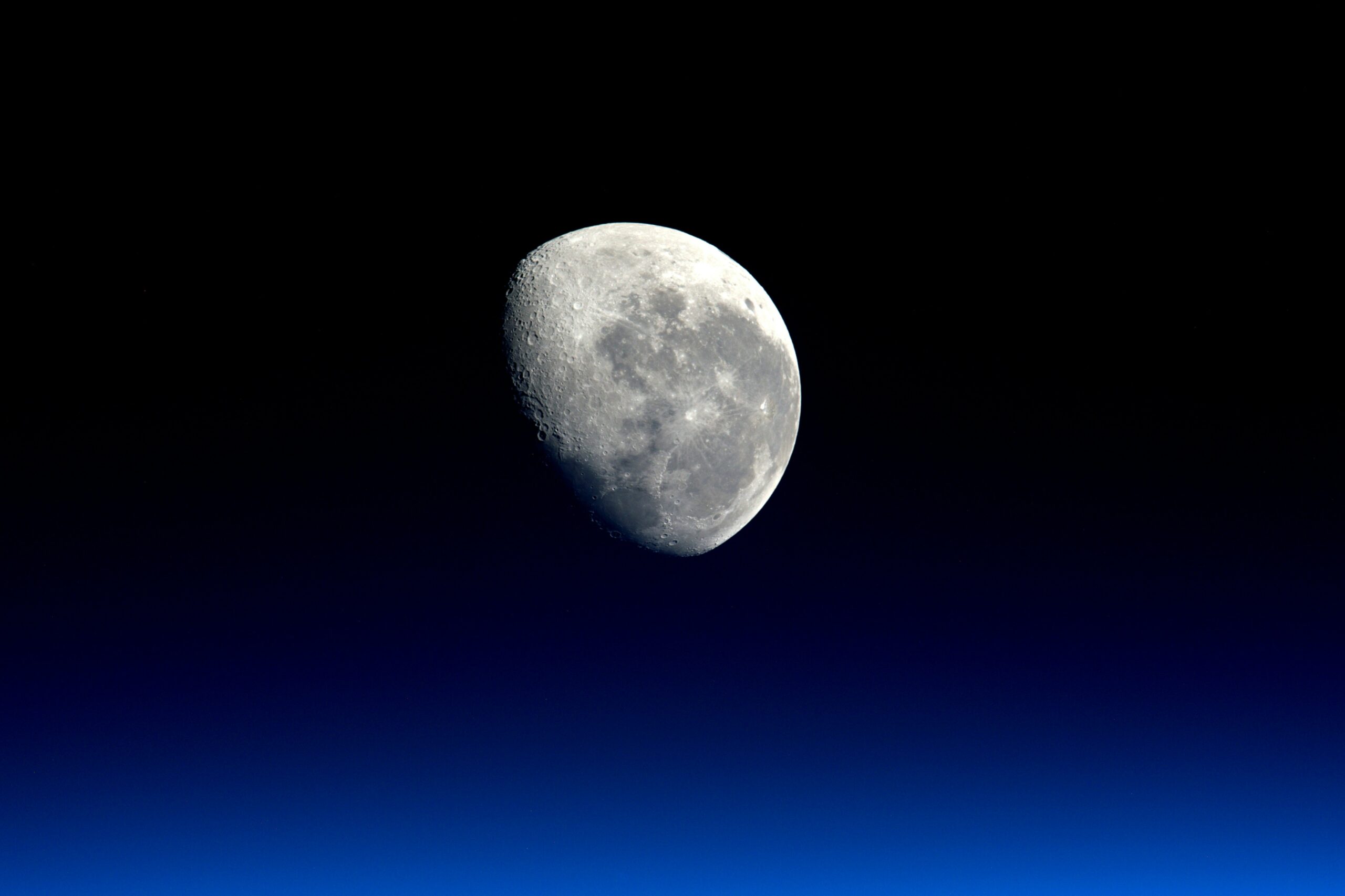When it comes to exploring the vastness of the night sky, the moon has always held a certain allure. Its radiant glow and mystifying presence captivate our imaginations, beckoning us to uncover its secrets. But what if you don’t have access to a powerful telescope? Fear not, for there may be an alternative solution that offers a close-up glimpse of our celestial neighbor: a spotting scope. But can it truly provide the same level of detail and clarity as a traditional telescope? In this article, we will explore the fascinating world of spotting scopes and determine whether they can indeed be used to observe the moon.

Understanding Spotting Scopes
What is a Spotting Scope?
A spotting scope is a type of optical instrument that is used for observing distant objects. It is similar to a small telescope but is designed specifically for terrestrial observing, such as birding, wildlife viewing, or target shooting. Spotting scopes are often lightweight and portable, making them convenient for outdoor activities.
Types of Spotting Scopes
There are two main types of spotting scopes: angled and straight. Angled spotting scopes have an eyepiece that is positioned at a 45-degree angle to the main body of the scope. They provide a more comfortable viewing position, especially when observing objects at higher altitudes. Straight spotting scopes, on the other hand, have a straight line from the objective lens to the eyepiece. They are easier to use for quick target acquisition and are often preferred by hunters and shooters.
Parts of a Spotting Scope
Spotting scopes are composed of several key parts. The objective lens is the large lens at the front of the scope that collects and focuses light. The eyepiece is the smaller lens at the opposite end that you look through. The body of the scope houses the optical components and is usually made of durable materials like aluminum or magnesium. Spotting scopes also have focus knobs to adjust the clarity and sharpness of the image, as well as zoom or magnification controls for changing the level of magnification.
Spotting Scope Versus Telescope
Key Differences between Spotting Scopes and Telescopes
While both spotting scopes and telescopes are optical instruments that use lenses to observe distant objects, there are some key differences between the two. Spotting scopes are primarily designed for terrestrial viewing, with a focus on providing clear and detailed images of objects on the ground. Telescopes, on the other hand, are designed for astronomical observations and are optimized for viewing celestial bodies such as planets, stars, and galaxies.
Which has Better Magnification?
The magnification capability of a spotting scope or telescope depends on various factors, including the focal length of the lens and the eyepiece used. Generally, telescopes have higher magnification capabilities compared to spotting scopes, as they are designed to observe objects that are much farther away. However, spotting scopes can still offer high magnification levels that are suitable for observing the moon and other celestial bodies.
Ease of Use: Spotting Scopes Vs. Telescopes
Spotting scopes are typically easier to use compared to telescopes. They are designed for quick and easy target acquisition, making them ideal for outdoor activities like birdwatching or wildlife viewing. Telescopes, on the other hand, require more setup and alignment to observe celestial objects accurately. Spotting scopes often have features like built-in image stabilization or easy-to-use focus knobs, which further enhance their user-friendliness.
Importance of Magnification in Observing Celestial Bodies
Why Magnification is Critical
Magnification plays a crucial role in observing celestial bodies like the moon. The higher the magnification, the more details you can see on the moon’s surface. It allows you to observe craters, mountains, and other lunar features with greater clarity. However, it’s important to note that too much magnification can result in a loss of image quality and brightness, so finding the right balance is essential.
Understanding the Magnification Levels of Spotting Scopes
Spotting scopes offer variable magnification levels, typically ranging from around 15x to 60x or even higher. When observing the moon, a moderate magnification level of around 30x to 40x is often recommended. This allows for a good balance between image detail and brightness. Higher magnifications may be useful for specific lunar observations, such as studying smaller craters or specific lunar features.
The Moon as an Astronomical Object
Basic Facts about the Moon
The moon is Earth’s only natural satellite and is located approximately 238,855 miles away from us. It has a diameter of about 2,159 miles, making it the fifth-largest moon in our solar system. The moon has different phases, which are caused by its position in relation to the sun and Earth. These phases include the new moon, crescent moon, half moon, and full moon.
Optimal Conditions for Moon Observing
To have the best viewing experience when observing the moon, certain conditions are ideal. Clear nights with minimal light pollution provide optimal visibility. The moon’s phase also affects the clarity and visibility of its features. A half-moon or crescent moon offers better contrast and definition of shadows, enhancing the details visible on its surface. Additionally, a stable atmospheric condition with minimal turbulence can greatly improve the viewing experience.

Can Spotting Scope be Used to Observe the Moon?
Advantages of Spotting Scopes in Lunar Observation
Spotting scopes can indeed be used to observe the moon, and they offer several advantages for this purpose. Their compact and portable design makes them easy to transport, allowing for moon observation from various locations. Spotting scopes’ moderate magnification range is ideal for lunar observation, providing a good balance between image detail and brightness. They also often have features like angled eyepieces, which can be more comfortable for extended lunar viewing sessions.
Limitations of Spotting Scopes for Moon Observation
While spotting scopes can be used for observing the moon, they do have some limitations compared to dedicated astronomical telescopes. Spotting scopes typically have smaller objective lenses, which affect the amount of light they can gather. This can result in slightly dimmer images compared to larger telescopes. Additionally, the magnification range of spotting scopes may not be as high as some telescopes, limiting the level of detail that can be observed on the moon’s surface.
How to Use a Spotting Scope for Moon Observation
Setting Up the Spotting Scope
To use a spotting scope for moon observation, you’ll need to set it up on a stable tripod or mount. Ensure that the scope is securely attached to the mount and adjust the height and position to your desired viewing angle. Make sure the focus knobs are set to their neutral position before proceeding.
Choosing the Right Magnification
Select the appropriate eyepiece or adjust the zoom control on your spotting scope to achieve the desired magnification level. As mentioned earlier, a moderate magnification of around 30x to 40x is often recommended for lunar observation.
Techniques for Clear Lunar Viewing
When observing the moon through a spotting scope, it’s important to let your eyes adjust to the darkness for a few minutes. This will enhance your ability to see finer details on the lunar surface. Additionally, using a stable tripod or mount and avoiding any unnecessary movement or vibration will help maintain a clear and steady image. Adjust the focus knobs to achieve optimal clarity and sharpness.

Best Spotting Scopes for Moon Observation
Leading Brands and Models
There are several reputable brands that offer high-quality spotting scopes suitable for moon observation. Some popular options include:
- Celestron Regal M2 80ED Spotting Scope
- Vortex Optics Diamondback HD Spotting Scope
- Bushnell Trophy XLT Spotting Scope
- Leupold SX-4 Pro Guide HD Spotting Scope
- Nikon Prostaff 5 Spotting Scope
Factors to Consider When Buying a Spotting Scope for Lunar Observation
When choosing a spotting scope for moon observation, consider factors such as the aperture size (larger apertures allow for more light-gathering capacity), the quality of the optics, and the overall durability and build quality. Also, keep in mind your specific budget and intended use for the spotting scope.
Enhancing Your Lunar Observation Experience
Use of Moon Maps and Apps
To enhance your lunar observation experience, consider using moon maps or smartphone apps that provide detailed information about the moon’s surface features. These resources can help you identify various craters, mountains, and other points of interest as you explore the lunar landscape through your spotting scope.
Observation Recording and Photography Through a Spotting Scope
Recording your lunar observations and capturing photographs through a spotting scope can be a great way to document your findings and share them with others. Many spotting scopes can be paired with a compatible smartphone adapter or camera adapter to facilitate easy photography or video recording.
Safety Tips When Observing the Moon
Preventing Damage from Bright Moonlight
When observing the moon, especially during its full phase, the moonlight can be extremely bright. To protect your eyes from excessive brightness, consider wearing sunglasses or using moon filters specifically designed for spotting scopes or telescopes. These filters can reduce the intensity of the moonlight while still allowing you to observe its features.
Use of Filters
Filters can also be used to enhance specific aspects of lunar observation. For example, a polarizing filter can help reduce glare and improve contrast, while colored filters can enhance the visibility of certain lunar features like craters or mountains.
Preventing Damage to Spotting Scope
To prevent damage to your spotting scope, avoid exposing it to extreme temperatures or moisture. When not in use, store it in a protective case or cover to prevent dust or debris from accumulating on the lenses. Additionally, handle your spotting scope with care to avoid any accidental bumps or drops that could damage the optics.
Spotting Scopes and Other Celestial Objects
Potential for Observing other Planets and Star Clusters
While spotting scopes are primarily designed for terrestrial viewing, they can also be used to observe other celestial objects to some extent. With the right conditions and magnification, spotting scopes can provide views of planets like Mars, Jupiter, and Saturn, as well as certain star clusters.
Limitations in the Observation of Deep Space Objects
Spotting scopes have certain limitations when it comes to observing deep space objects like galaxies or nebulae. Their smaller apertures and lower magnification ranges can make it challenging to gather enough light or resolve fine details of these distant objects. Dedicated astronomical telescopes with larger apertures and specialized optics are better suited for deep space observations.
In conclusion, while spotting scopes may not offer the same level of magnification and light-gathering capabilities as dedicated telescopes, they can still be used effectively for observing the moon and other celestial objects. Their portability, ease of use, and moderate magnification range make them a convenient and accessible option for lunar observation. By following the recommended techniques, choosing the right equipment, and observing safety precautions, you can have an enjoyable and fulfilling experience exploring the wonders of the moon through a spotting scope.
